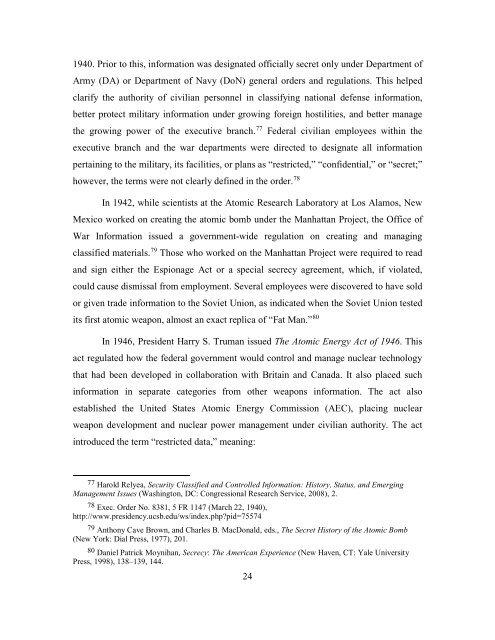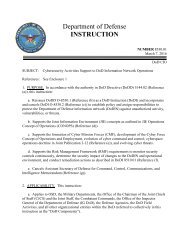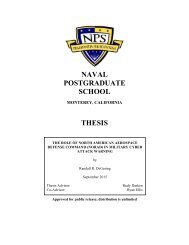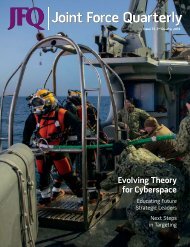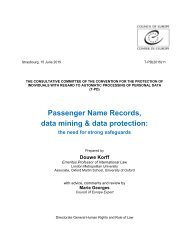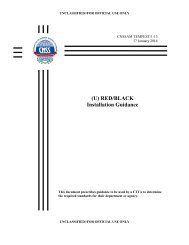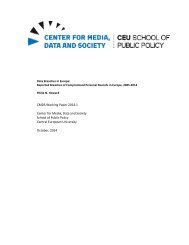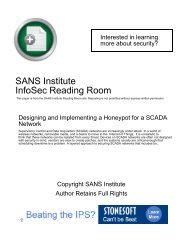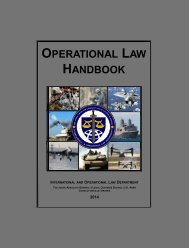SCHOOL THESIS
?view&did=768625
?view&did=768625
You also want an ePaper? Increase the reach of your titles
YUMPU automatically turns print PDFs into web optimized ePapers that Google loves.
1940. Prior to this, information was designated officially secret only under Department of<br />
Army (DA) or Department of Navy (DoN) general orders and regulations. This helped<br />
clarify the authority of civilian personnel in classifying national defense information,<br />
better protect military information under growing foreign hostilities, and better manage<br />
the growing power of the executive branch. 77 Federal civilian employees within the<br />
executive branch and the war departments were directed to designate all information<br />
pertaining to the military, its facilities, or plans as “restricted,” “confidential,” or “secret;”<br />
however, the terms were not clearly defined in the order. 78<br />
In 1942, while scientists at the Atomic Research Laboratory at Los Alamos, New<br />
Mexico worked on creating the atomic bomb under the Manhattan Project, the Office of<br />
War Information issued a government-wide regulation on creating and managing<br />
classified materials. 79 Those who worked on the Manhattan Project were required to read<br />
and sign either the Espionage Act or a special secrecy agreement, which, if violated,<br />
could cause dismissal from employment. Several employees were discovered to have sold<br />
or given trade information to the Soviet Union, as indicated when the Soviet Union tested<br />
its first atomic weapon, almost an exact replica of “Fat Man.” 80<br />
In 1946, President Harry S. Truman issued The Atomic Energy Act of 1946. This<br />
act regulated how the federal government would control and manage nuclear technology<br />
that had been developed in collaboration with Britain and Canada. It also placed such<br />
information in separate categories from other weapons information. The act also<br />
established the United States Atomic Energy Commission (AEC), placing nuclear<br />
weapon development and nuclear power management under civilian authority. The act<br />
introduced the term “restricted data,” meaning:<br />
77 Harold Relyea, Security Classified and Controlled Information: History, Status, and Emerging<br />
Management Issues (Washington, DC: Congressional Research Service, 2008), 2.<br />
78 Exec. Order No. 8381, 5 FR 1147 (March 22, 1940),<br />
http://www.presidency.ucsb.edu/ws/index.php?pid=75574<br />
79 Anthony Cave Brown, and Charles B. MacDonald, eds., The Secret History of the Atomic Bomb<br />
(New York: Dial Press, 1977), 201.<br />
80 Daniel Patrick Moynihan, Secrecy: The American Experience (New Haven, CT: Yale University<br />
Press, 1998), 138–139, 144.<br />
24


